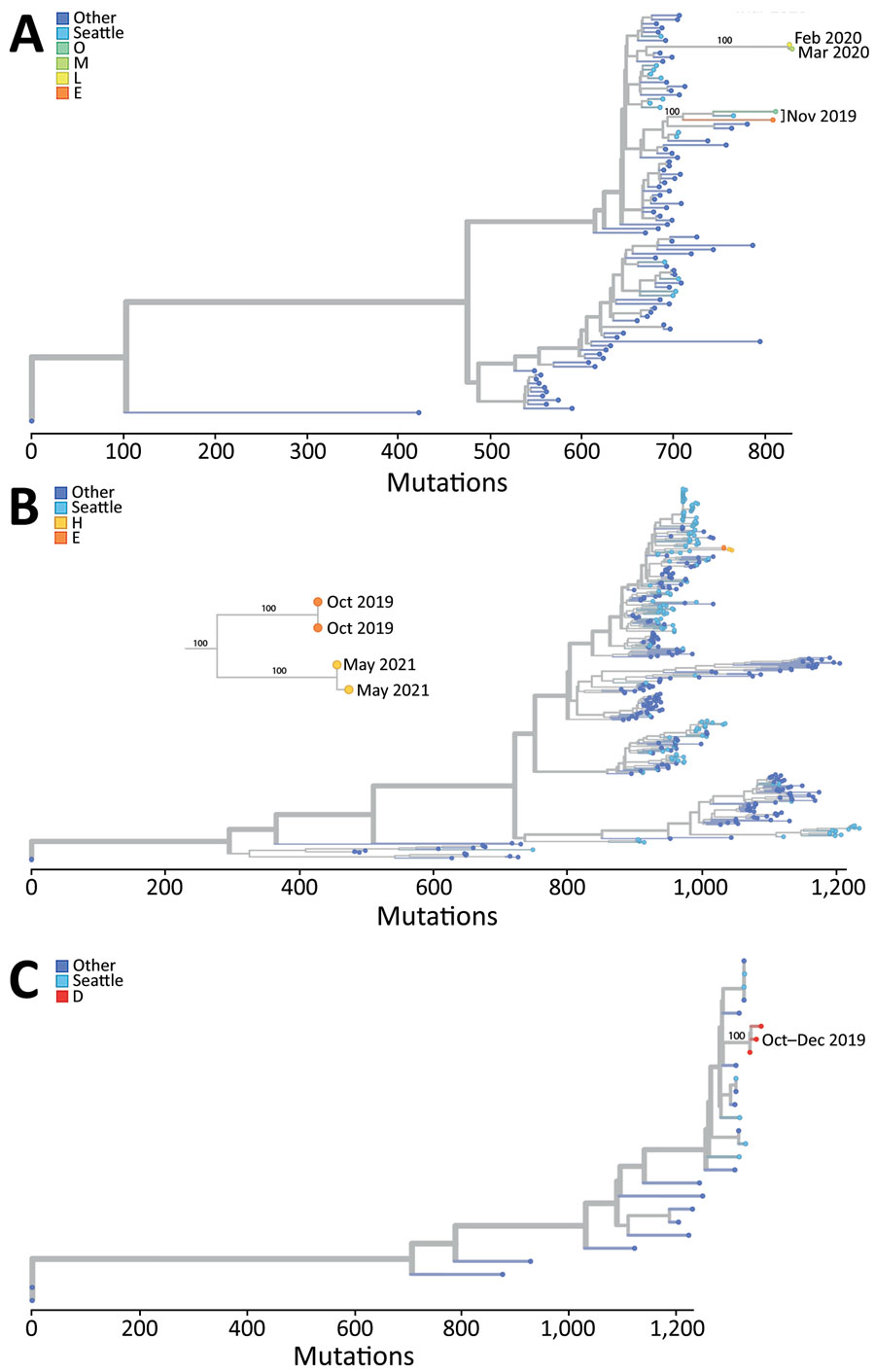Volume 28, Number 11—November 2022
Research Letter
Human Parainfluenza Virus in Homeless Shelters before and during the COVID-19 Pandemic, Washington, USA
Figure

Figure. Phylogenetic trees of human parainfluenza viruses in homeless shelters, King County, Washington, USA, October 2019‒May 2021. A) Human parainfluenza virus 1; B) human parainfluenza virus 3; C) human parainfluenza virus 4a. Letters in keys indicate different homeless shelters from which sequenced specimens were collected. Other indicates genomic data from locations not in Seattle, Washington. Seattle indicates genomic data from Seattle other than homeless shelters in this study.
Page created: September 02, 2022
Page updated: October 24, 2022
Page reviewed: October 24, 2022
The conclusions, findings, and opinions expressed by authors contributing to this journal do not necessarily reflect the official position of the U.S. Department of Health and Human Services, the Public Health Service, the Centers for Disease Control and Prevention, or the authors' affiliated institutions. Use of trade names is for identification only and does not imply endorsement by any of the groups named above.